Cuban-style ajiaco is a rich, satisfying soup made with a mix of meats and a generous variety of tropical vegetables, especially root vegetables like malanga, yuca, and boniato. It's a hearty, filling dish that simmers low and slow for layers of deep, comforting flavor.
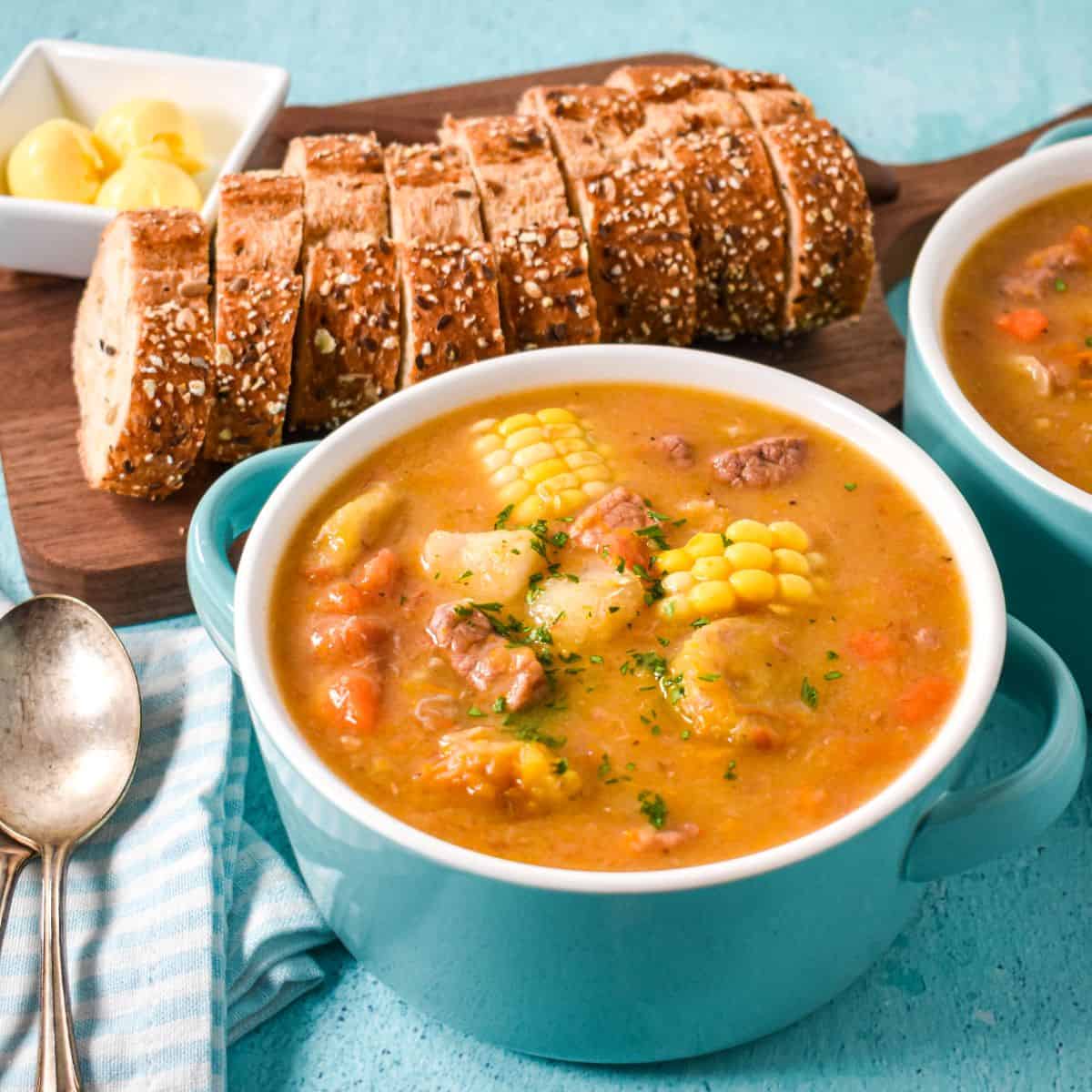
This post may contain affiliate links. As an Amazon Associate, I earn from qualifying purchases.
Ajiaco is also a popular Colombian soup, but the two versions are quite different. Colombian ajiaco is more of a chicken and potato soup, while Cuban ajiaco is a cornucopia of meats and produce like pork, beef, root vegetables, pumpkin, corn, and plantains.
You will need
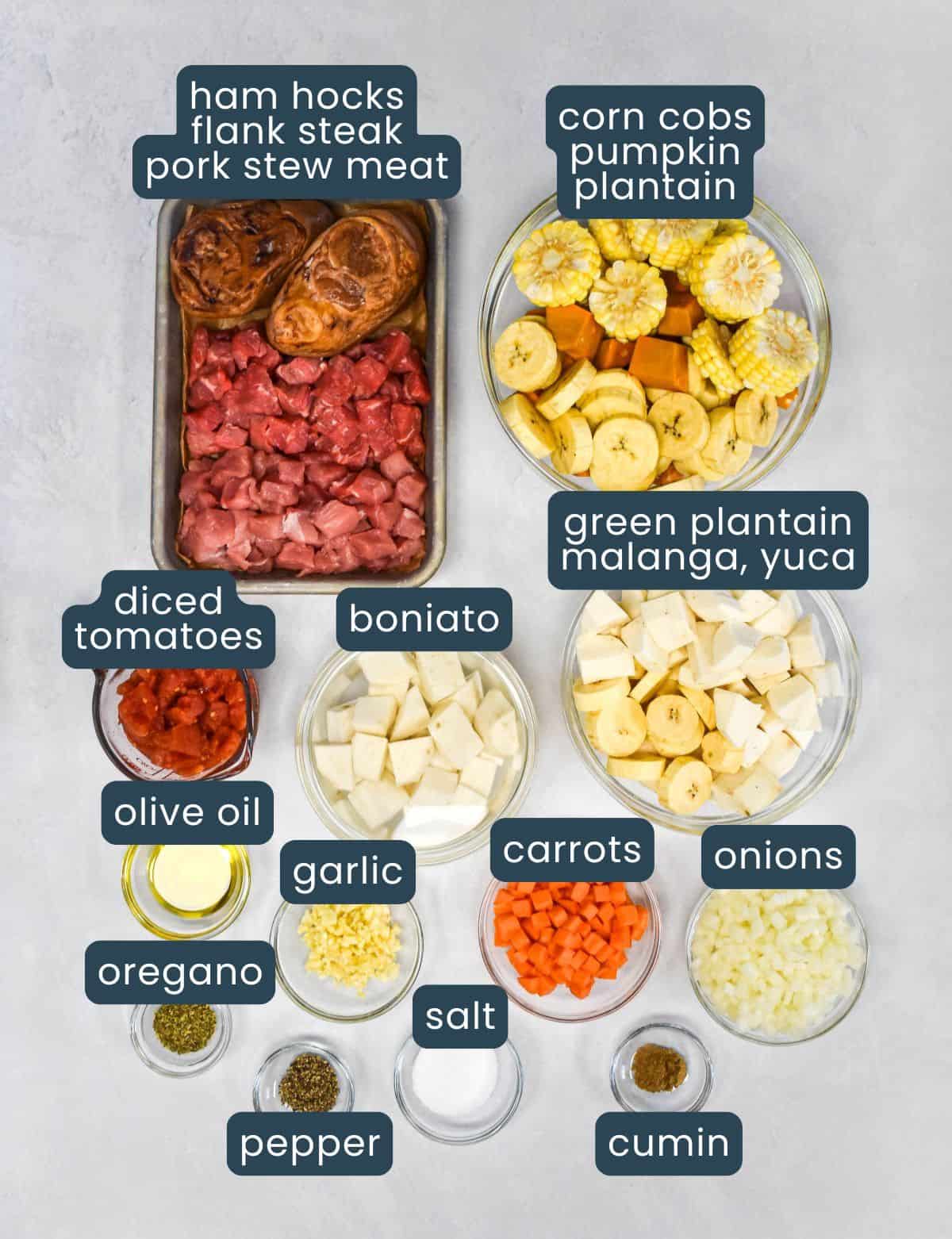
🍖 Meat - This recipe includes pork stew meat, flank steak (or brisket if that's what you can find), and smoked ham shank or ham hocks. They're all affordable cuts that become tender with the long cooking time.
🌽 Produce - Onion, carrot, and garlic make the base of the soup. A mix of tropical and root vegetables like malanga, yuca, boniato, pumpkin, and plantains (green and semi-ripe) give the soup its signature hearty texture and earthy flavor. Corn on the cob adds a touch of sweetness.
🧂 Seasoning - Salt, dried oregano, cumin, and black pepper work with the aromatics to build the soup's base. The spices are simple but effective, adding depth and warmth without overpowering the other ingredients.
🥫 Pantry - Olive oil is used to sauté the aromatics and start building flavor from the very first step. Canned diced tomatoes add color and acidity, balancing the richness of the meat and root vegetables. Water (not pictured) makes the broth, allowing the ingredients to infuse it with flavor as it simmers.
📖 See the recipe card for quantities and preparation.
How to make ajiaco
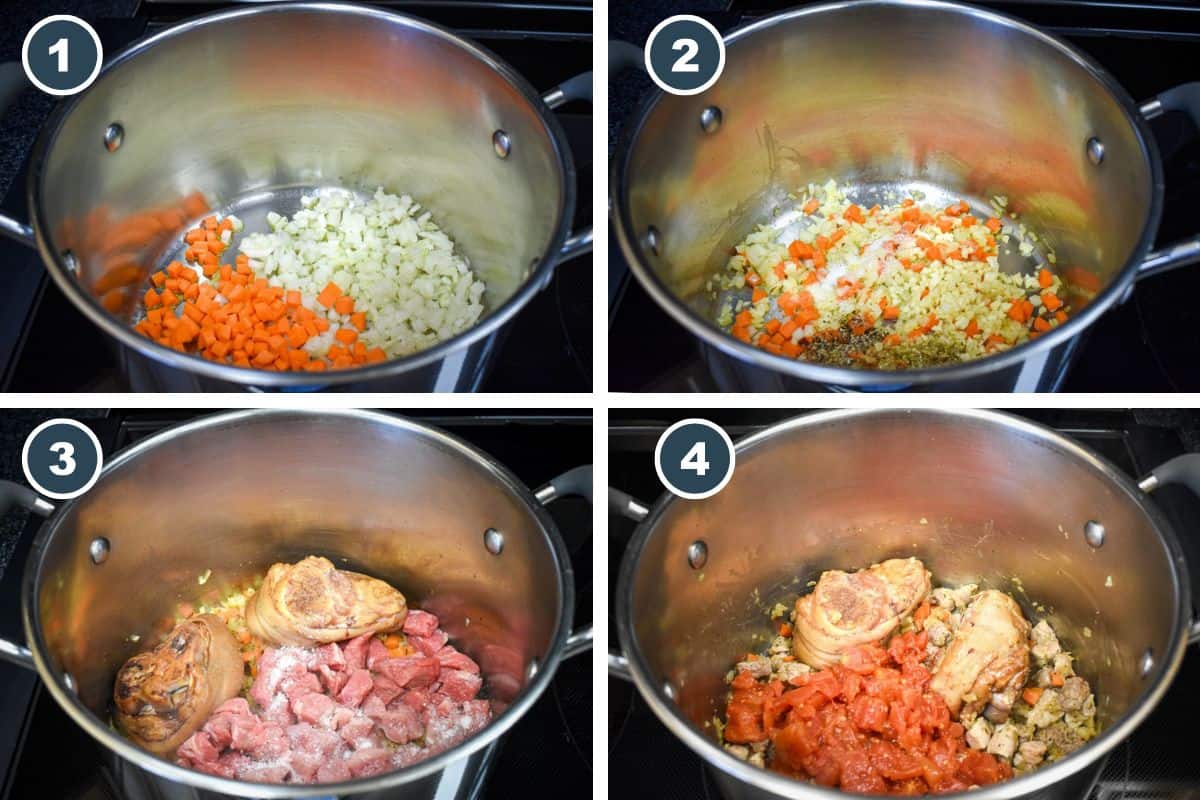
- Heat the olive oil in a large, heavy-bottom pot (at least 8 quarts) over medium heat. Add the onions and carrots. Cook for 3 minutes, stirring frequently.
- Add the garlic, 1 teaspoon salt, oregano, cumin, and black pepper. Cook for 1 minute, stirring often.
- Add the ham shank, flank steak, pork stew meat, and the remaining 1 teaspoon of salt. Stir well. Cook for 2-3 minutes to lightly brown the meat, stirring frequently.
- Add the drained tomatoes and stir to combine.
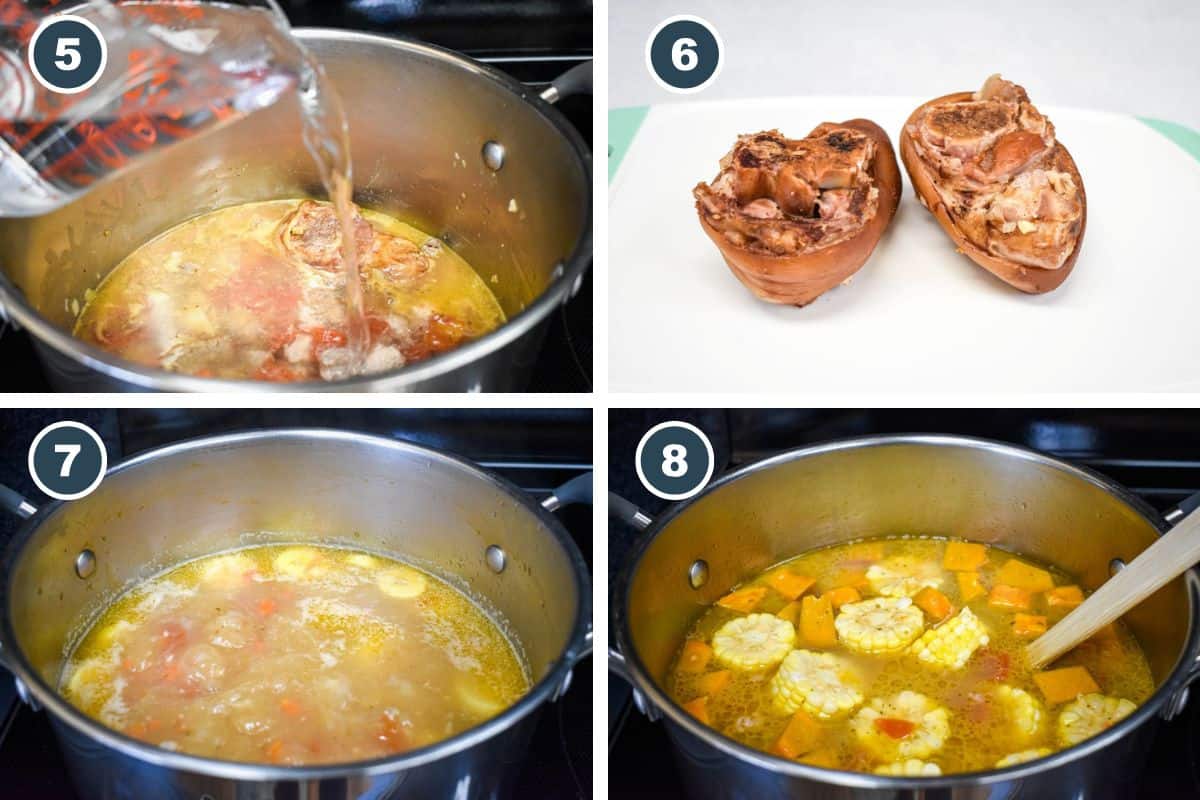
- Pour in 12 cups of water. Raise the heat to high and bring to a boil. Once boiling, lower the heat to medium-low, cover the pot, and simmer for 60 minutes. Stir occasionally.
While the soup simmers, prep the vegetables in two batches:
- Batch one: Peel and cut the green plantain, malanga, and yuca. Place them together in a bowl.
- Batch two: Prep the corn, boniato, pumpkin, and platano pinton (semi-ripe plantain). Keep the boniato in cold water to prevent browning.
- After 1 hour, remove the ham shank from the pot. Set it aside to cool.
- Add the green plantain, malanga, and yuca to the soup. Raise the heat to high and bring to a boil. Lower the heat to medium-low, cover the pot, and simmer for 30 minutes, stirring occasionally.
Meanwhile, once the ham shank is cool enough to handle, remove the fat and bones, chop the meat, and return it to the pot.
- Add the corn, boniato, pumpkin, and platano pinton. Raise the heat to high and bring to a boil again. Lower the heat to medium-low, cover, and cook for 30 more minutes, or until all the vegetables are fork-tender.
Taste and add salt if needed. As a reference, we added 1½ teaspoons to ours. Enjoy it on its own, or serve with a side of crusty bread for dipping or a side of white rice.
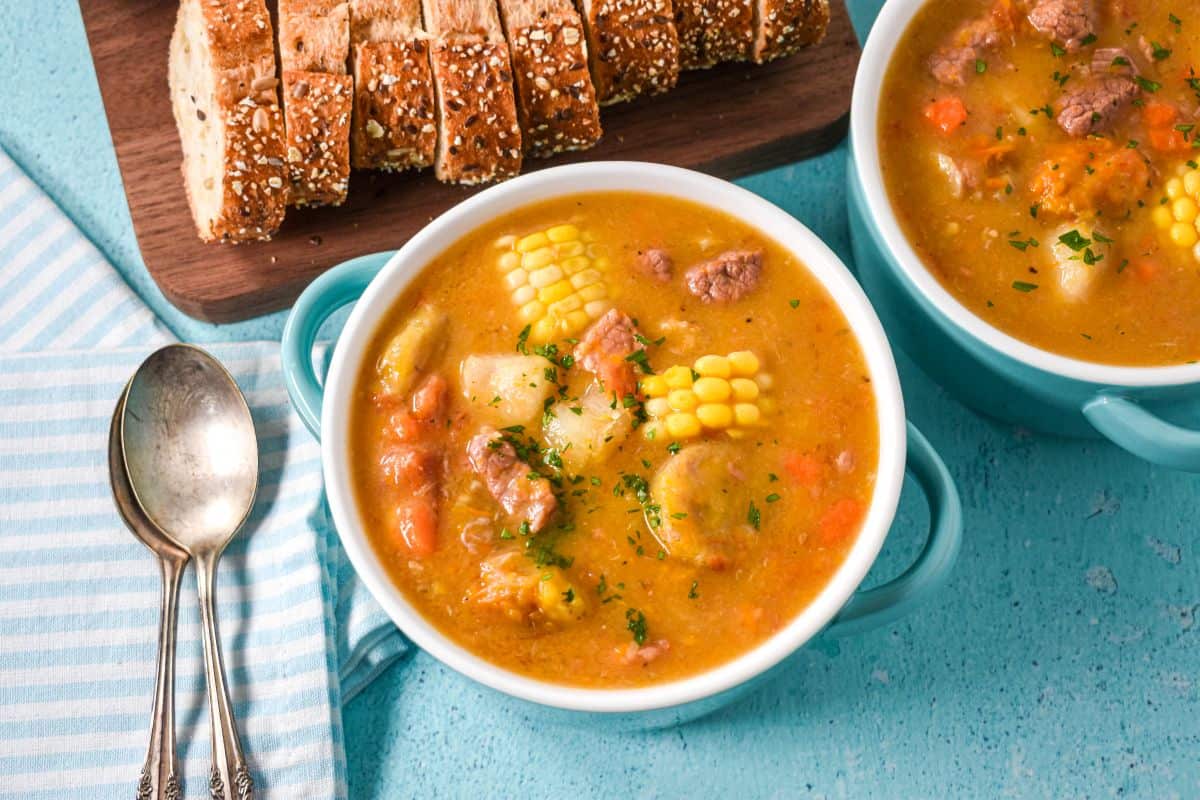
Recipe tips and notes
- This recipe is a mostly traditional Cuban ajiaco, except we don't include tasajo. Tasajo is dried beef (similar to beef jerky) that's rehydrated before cooking. We skip it because it can be hard to find. Instead, we use more common smoked ham shanks to add that salty flavor.
- It's important to use a large, heavy-bottom pot-at least 8 quarts. This recipe includes several pounds of meat and vegetables, plus 12 cups of water. You don't want to run out of room halfway through cooking.
- Separate the vegetables into different large bowls based on the order they'll be added to the soup. This helps with organization-especially since malanga, boniato, and yuca can look very similar once peeled.
- Keep the boniato in a bowl of water after peeling, like you would with potatoes, to help prevent browning.
Storing and reheating
Refrigerator - Store leftovers in an airtight container in the refrigerator for 3 to 4 days. Allow the soup to cool before refrigerating.
Freezer - To freeze, cool the soup quickly, then transfer to a freezer-safe container. Leave 1 to 2 inches of space at the top to allow for expansion. Label with the contents and date, and freeze for up to 2 months.
Reheating - If frozen, thaw in the refrigerator overnight. Reheat ajiaco gently in a saucepan over medium to medium-low heat, stirring occasionally until heated through. You can also microwave individual portions, loosely covered, in 1 to 2 minute intervals, stirring in between.
Reheating tip: The soup may thicken during storage-add 1 to 2 tablespoons of water or broth while reheating, stirring between each addition until the desired consistency is reached.
Food safety - Do not leave food out for longer than 2 hours (or 1 hour if the temperature is over 90°F). Reheat leftovers to an internal temperature of at least 165°F. For more information on food storage and safety, visit the U.S. Department of Agriculture and foodsafety.gov.
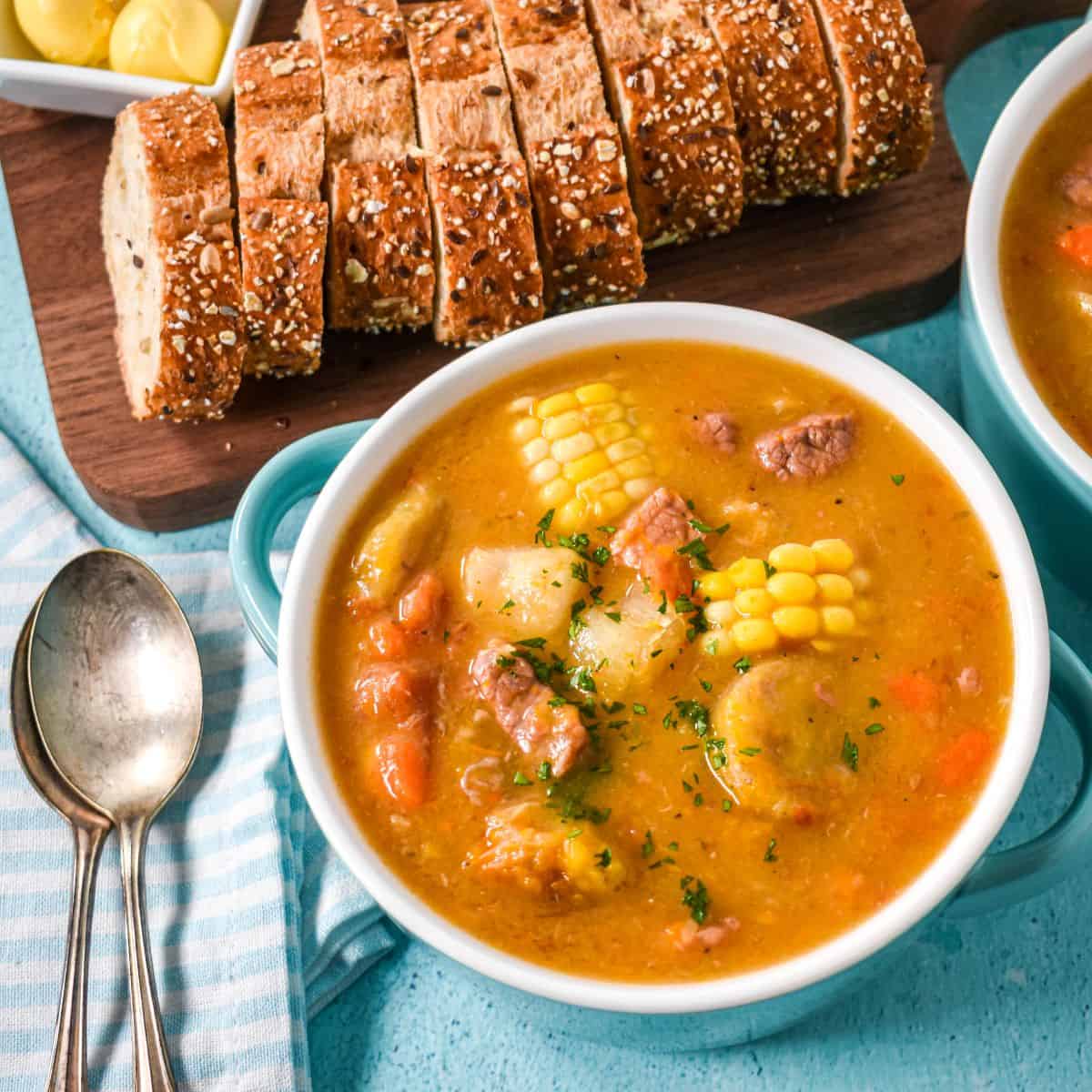
This soup is a labor of love. It's a process-with many ingredients and steps-like this fantastic from-scratch Cuban chicken soup. Is all the work worth it? Absolutely!
For simpler traditional dishes, try our guiso de maiz (Cuban corn stew), this easy and hearty potaje de lentejas (lentil stew), or a delicious sopa de chicharos (split pea soup). Can't get enough tropical comfort food? Take a look at our full Cuban soups and stews collection for even more inspiration.
Join Us
Subscribe to our Newsletter to get the latest recipes, cooking tips, and kitchen inspiration delivered straight to your inbox. Don't forget to follow us on social media for daily recipe ideas and more!
📖 Recipe

Ajiaco
Ingredients
- 1 tablespoon Extra Virgin Olive Oil
- 1 medium Onion small dice
- 1 Carrot diced
- 3-4 Garlic Cloves minced or grated
- 2 teaspoons Salt divided
- 1 teaspoon Dried Oregano
- ¼ teaspoon Cumin
- ¼ teaspoon Black Pepper
- 1 pound Smoked Ham Hocks or Ham Shank sliced into pieces if available
- ½ pound Flank Steak cut into bite-sized cubes
- ½ pound Pork Stew Meat cut into bite-sized cubes
- 1 (14.5 ounce) Can Diced Tomatoes drained
- 12 cups Water
- 1 Platano Verde (Green Plantain), peeled and cut into ½-inch rounds
- 1 Malanga peeled and cut into 1-inch pieces
- 1 Yuca (about 8-12 ounces), peeled and cut into 1-inch pieces
- 1½ Corn Cobs cut into 8-12 thin rounds
- 1 medium Boniato (about 8 ounces), peeled and cut into 1-inch pieces (keep in cold water after cutting to prevent browning)
- 1 pound Pumpkin peeled and cut into 1-inch pieces
- 1 Platano Pinton (Semi-Ripe Plantain), peeled and cut into ½-inch rounds
Instructions
- Heat the olive oil in a large, heavy-bottom pot (at least 8 quarts) over medium heat.
- Add the onions and carrots. Cook for 3 minutes, stirring frequently.
- Add the garlic, 1 teaspoon salt, oregano, cumin, and black pepper. Cook for 1 minute, stirring often.
- Add the ham shank, flank steak, pork stew meat, and the remaining 1 teaspoon of salt. Stir well.
- Cook for 2-3 minutes to lightly brown the meat, stirring frequently.
- Add the drained tomatoes and stir to combine.
- Pour in 12 cups of water. Raise the heat to high and bring to a boil.
- Once boiling, lower the heat to medium-low, cover the pot, and simmer for 60 minutes. Stir occasionally.
- While the soup simmers, prep the vegetables in two batches:
- Batch One: Peel and cut the green plantain, malanga, and yuca. Place them together in a bowl.
- Batch Two: Prep the corn, boniato, pumpkin, and platano pinton (semi-ripe plantain). Keep the boniato in cold water to prevent browning.
- After 1 hour, remove the ham shank from the pot. Set it aside to cool.
- Add the green plantain, malanga, and yuca to the soup. Raise the heat to high and bring to a boil.
- Lower the heat to medium-low, cover the pot, and simmer for 30 minutes, stirring occasionally.
- Meanwhile, once the ham shank is cool enough to handle, remove the fat and bones, chop the meat, and return it to the pot.
- Add the corn, boniato, pumpkin, and platano pinton. Raise the heat to high and bring to a boil again.
- Lower the heat to medium-low, cover, and cook for 30 more minutes, or until all the vegetables are fork-tender.
- Taste the ajiaco and add salt if needed. As a reference, we added 1½ teaspoons to ours.
- Enjoy it on its own, or serve with a side of crusty bread for dipping or a side of white rice.
Notes
- Use a large pot, at least 8 quarts. This recipe makes a big batch with several pounds of meat and vegetables plus 12 cups of water.
- Separate the vegetables into different bowls based on the order they'll be added to the soup. This helps with organization-especially since malanga, boniato, and yuca can look very similar once peeled.
- Keep the boniato in a bowl of water after peeling, like you would with potatoes, to help prevent browning.
Nutrition
The nutritional information above is computer generated and is only an estimate. There is no guarantee that it is accurate. This data is provided as a courtesy for informational purposes only.


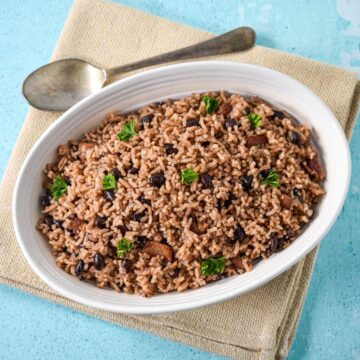

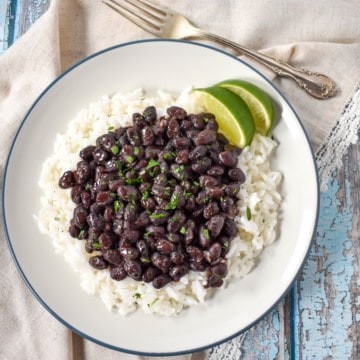
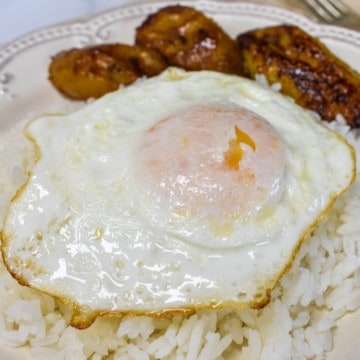
Michelle
Third time making this recipe and i have to say it’s the best one yet ! Take times for preparation but oh so worth it. Now me and my family eat ajiaco for the next few days.
silvia alvarez
Great recipe. I too am Cuban and have tried several ajiaco recipes but this was simple and delicious. I substituted the meats for chicken but will try with meats the next time. definitely will make again! thanks for sharing. silvia
Janet Perez
For calorie counting purposes, how much is considered a serving?? 1 cup of liquid including all the added ingredients??
Elizabeth
Hi Janet,
It is eight servings, divide the soup into eight. The amount of liquid it will yield can vary depending on how much cooks away, thickens, etc. Thanks for stopping by.
Raul
My family and I come from Cuba. Although we have been here in the U.S. since 1962, our culinary traditions have not been forgotten. This recipe is nearly identical to our family's. The only difference is that we don't add ham hock. Instead we add bone-in chicken thighs while making the broth, as well as corn meal dumplings towards the end of the cooking time. I personally tweak the ajiaco when I make it by adding 2-3 strands of saffron. It gives it a distinct and wonderful flavor.
Elizabeth
Hi Raul,
Thank you for stopping by. Those corn meal dumplings sound delicious!
Lillian
My parents came from Cuba in 1959. I always remember having Ajiaco as A child. I don’t recall ever having it with corn meal dumplings.
Elizabeth
Hello Lillian,
There are no corn meal dumplings in this soup. Thanks for stopping by.
Rhonda Kearns
I was blown away by this stew! My husband's family is Puerto Rican & I've learned to make sancocho but wanted to try something different this year so I made this recipe instead. Omg, it does not compare! This has got to be one of my favorite stews - up there with beef carbonade. I will be making this for years to come.
Veronica B.
Hi! I’ve been having a hard time finding malanga and yuca but I did find it frozen. Would the frozen kind still work the same? Also, can I use sweet potato instead of boniato? Thanks!
Elizabeth
Hi Veronica,
Yes, frozen yuca and malanga will work. I’ve never used the sweet potato in this soup but the taste is similar so it should be fine. Sweet potato cooks pretty quickly and will break apart a bit so add it towards the end. Thanks for dropping by, good luck!